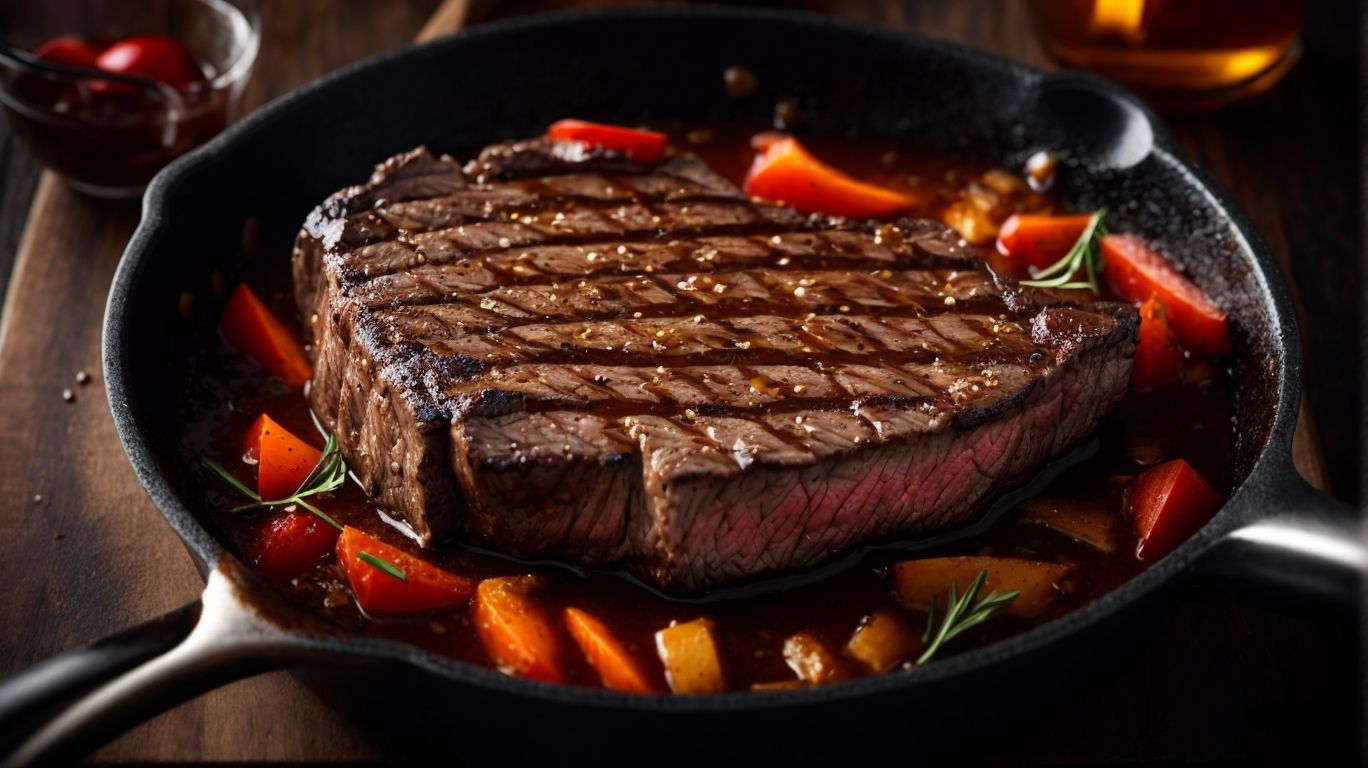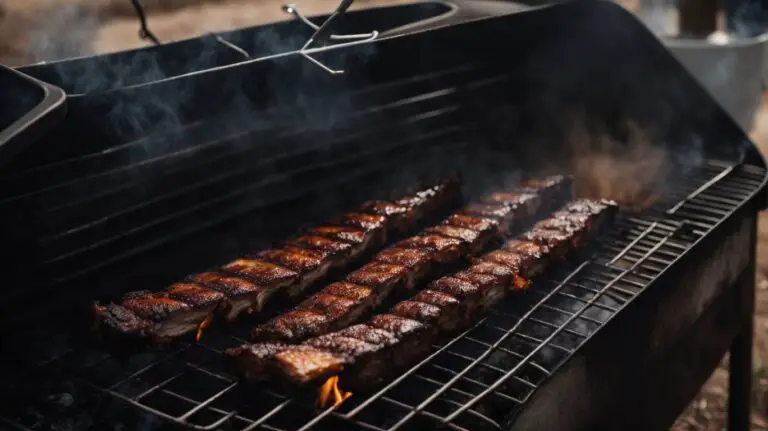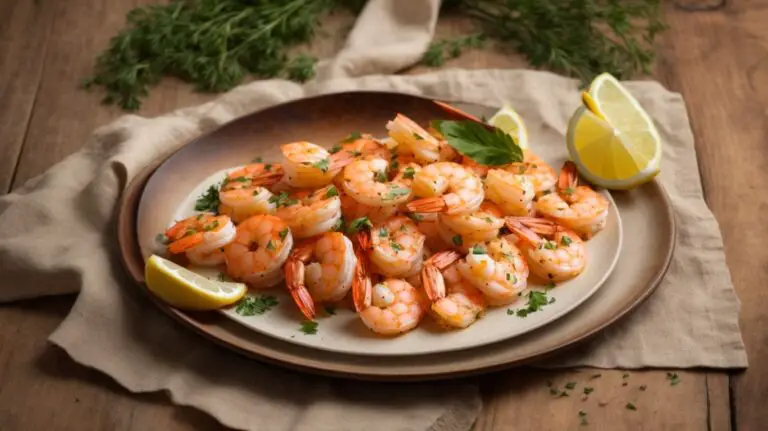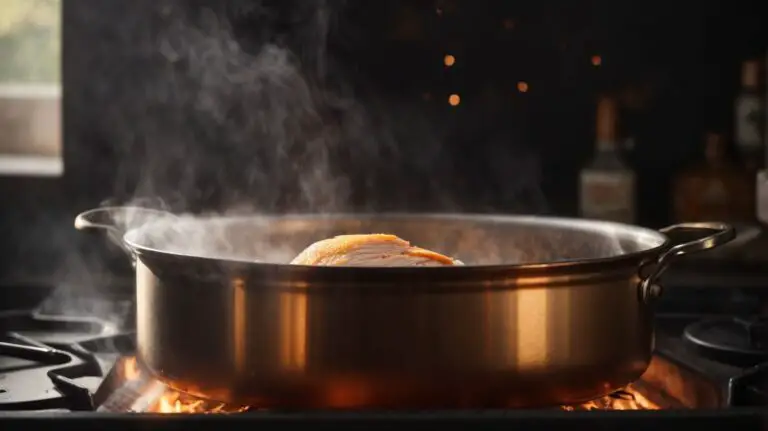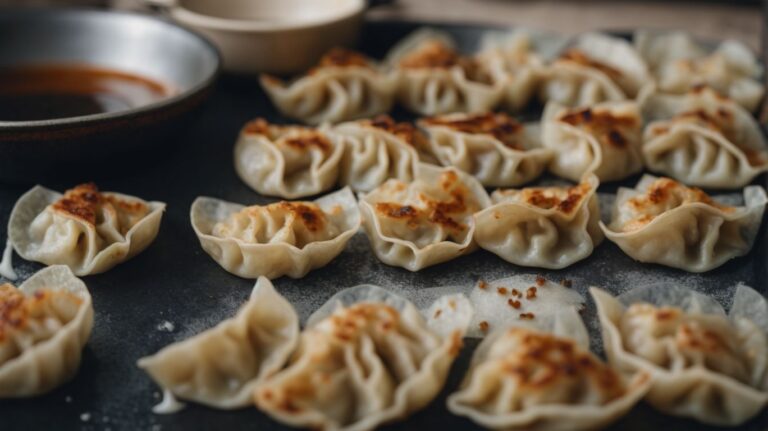How to Cook Steak in Oven After Searing?
Are you looking to elevate your steak cooking game? Searing your steak before finishing it in the oven is a game-changer when it comes to flavor and texture.
We discuss the importance of searing, how to properly sear a steak, why cooking steak in the oven after searing is beneficial, the best type of steak for this method, and step-by-step instructions on how to prepare and cook your steak.
Get ready to impress your taste buds with perfectly cooked steak every time!
Key Takeaways:
What is Searing and Why is it Important?
Searing is a cooking method that involves quickly browning the surface of the steak over high heat to create a flavorful crust and lock in juices. It is essential for enhancing the taste and texture of the steak.
This quick cooking technique not only adds depth to the overall flavor profile by caramelizing the sugars present on the surface of the steak but also helps in moisture retention, ensuring a juicy and tender bite. By searing the steak, you kickstart the Maillard reaction, creating those sought-after savory flavors that make each bite a delightful experience. Searing also adds an appealing visual element, giving the steak an appetizing golden-brown exterior that is both flavorful and aesthetically pleasing.
How to Properly Sear a Steak
To properly sear a steak, start by heating a cast iron skillet until it’s smoking hot, season the steak generously with salt and pepper, then sear each side for a few minutes until a golden crust forms, adding butter for extra flavor.
Once you have your skillet preheated and the steak seasoned, place the steak into the hot skillet without overcrowding it, making sure there’s enough space for proper searing. Allow the steak to develop a caramelized crust on one side before flipping it to ensure that beautiful Maillard reaction. This process helps in creating depth of flavor and adds a tantalizing aroma to the steak.
Why Cook Steak in the Oven After Searing?
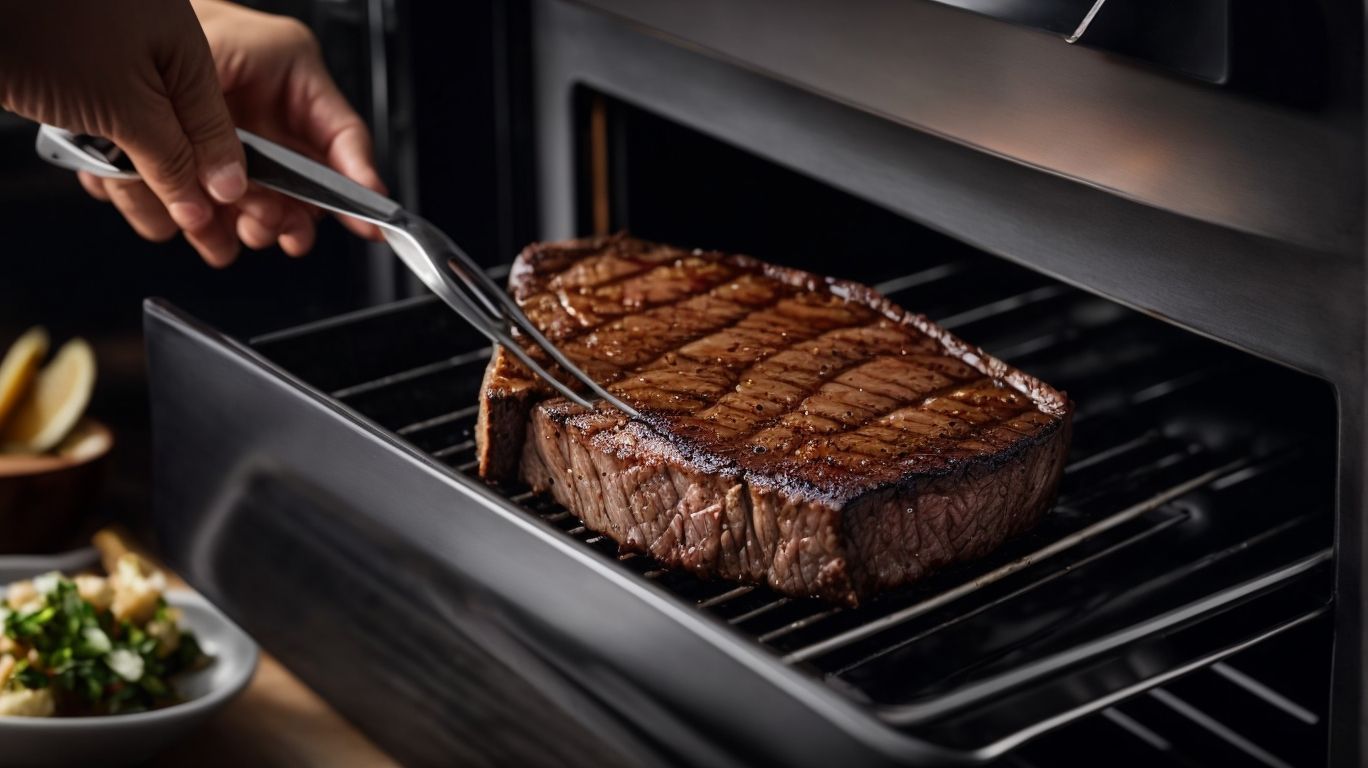
Credits: Poormet.Com – Christopher Thompson
Cooking steak in the oven after searing ensures even cooking throughout the steak, allowing it to reach the desired doneness, such as medium-rare, by controlling the internal temperature more precisely.
Finishing the steak in the oven provides a more consistent level of doneness compared to just searing, where the outer layers may cook faster than the center. By transferring the seared steak to the oven, you can manage the temperature more accurately, resulting in a perfectly cooked steak with a juicy and tender interior. This method is particularly beneficial for thicker cuts of steak that require longer cooking times, ensuring that the meat cooks evenly without overcooking the outside.
What Type of Steak is Best for This Method?
This method works best with thick cuts of steak, such as ribeye or New York Strip, known for their marbling that adds flavor and juiciness to the meat when cooked using this technique.
When selecting the perfect steak for this cooking approach, opt for cuts like ribeye and New York Strip that offer a balance of tenderness and richness. These cuts are prized for their intramuscular fat distribution, which creates a melt-in-your-mouth experience when grilled or seared. The marbling in these steaks not only enhances flavor but also helps to keep the meat moist during cooking. The result? An incredibly flavorful and satisfying steak dinner that will impress any meat enthusiast.
How to Prepare the Steak for Oven Cooking
Before oven cooking, ensure the steak is properly seasoned with salt, pepper, and any desired herbs or spices, and allow it to come to room temperature to promote even cooking.
Seasoning the steak is a crucial step in enhancing its flavor profile, as the salt helps tenderize the meat while the pepper adds a hint of spiciness. Experiment with herbs like rosemary, thyme, or garlic powder to elevate the taste further.
Once seasoned, let the steak rest at room temperature for approximately 30 minutes. This slight stint outside the fridge allows the fibers to relax, ensuring a more tender and juicy final result.
Seasoning the Steak
For seasoning the steak, use a blend of kosher salt, peppercorn medley, minced garlic, and melted butter to enhance the flavor profile and create a delicious crust when cooked.
To begin, generously sprinkle kosher salt and peppercorn medley on both sides of the steak, ensuring an even coating for balanced seasoning. Next, rub minced garlic over the meat, allowing its aromatic essence to infuse into the steak. Then, drizzle melted butter on top, providing richness and aiding in the formation of a flavorful crust.
Bringing the Steak to Room Temperature
Allow the steak to rest at room temperature for about 30 minutes before cooking to ensure even cooking and to promote the tenderness of the meat, especially for cuts with ample marbling.
When you bring the steak to room temperature, it allows the meat to cook more evenly throughout, preventing the center from being rare while the exterior is overcooked. This step is crucial in preparing a perfectly cooked steak, especially for thicker cuts where achieving the desired doneness can be challenging.
Resting the steak before cooking also helps to relax the muscle fibers, making the meat more tender when it hits the heat. It allows the flavors to meld and distribute evenly, enhancing the overall taste and juiciness of the steak.
How to Cook Steak in the Oven After Searing
Cooking steak in the oven after searing involves preheating the oven, transferring the seared steak from the stovetop to the oven, cooking to the desired doneness, and following specific instructions for timing and temperature.
Once the oven is preheated to the right temperature, usually around 400-450°F (200-230°C), carefully transfer the seared steak onto a baking tray or a cast-iron skillet to continue the cooking process.
It is crucial to check the doneness of the steak using a meat thermometer. For a medium-rare steak, cook until the internal temperature reaches 135°F (57°C), and adjust cooking time accordingly for rare, medium, or well-done preferences.
Remember to let the steak rest for a few minutes after removing it from the oven as it continues to cook slightly and allows the juices to redistribute for a flavorful experience.
Step 1: Preheat the Oven
To begin, preheat the oven to the desired temperature specified in the steak cooking process to ensure consistent and efficient cooking results.
Preheating the oven holds immense significance as it sets the stage for an evenly cooked and juicy steak. The ideal temperature is crucial for locking in the flavors and juices within the meat while achieving the perfect level of doneness. By following the specific cooking instructions, you guarantee that the steak is cooked to perfection, whether you prefer it rare, medium-rare, medium, or well-done. This essential step ensures that the meat cooks uniformly, resulting in a delicious dish that delights the taste buds.
Step 2: Sear the Steak on the Stovetop
Next, sear the steak on the stovetop using a hot skillet to develop a caramelized crust before transferring it to the oven for further cooking.
When searing on the stovetop, ensure the skillet is hot to achieve that perfect sear. Allow the steak to cook undisturbed for a few minutes on each side to develop a delicious crust. The intense heat will lock in the natural juices, enhancing the flavors.
Once both sides are beautifully caramelized, it’s time for the important step of transferring the steak to the oven. Preheat the oven to the desired temperature, usually around 400-450°F, and place the skillet directly inside to continue the cooking process.
Step 3: Transfer the Steak to the Oven
Carefully transfer the seared steak from the stovetop skillet to the preheated oven, ensuring consistent heat distribution for thorough cooking.
By moving the steak to the oven, you allow the heat to envelop the meat evenly, ensuring that it cooks uniformly throughout. This method is particularly effective for thicker cuts of steak, as the oven provides a gentle and consistent temperature to finish cooking the inside without overcooking the outside. Remember, a hot skillet can sear the exterior beautifully, while the oven gently cooks the interior to your desired level of doneness.
Step 4: Cook to Desired Doneness
Continue cooking the steak in the oven until it reaches the desired level of doneness, using a meat thermometer to achieve precision, especially for medium-rare outcomes.
Insert the thermometer into the thickest part of the steak and monitor the internal temperature.
- Achieving a perfect medium-rare steak requires the inside to reach around 135°F (57°C).
Remember, the steak’s temperature will rise a few more degrees while resting, so aim for slightly below the final desired temperature.
How to Rest and Serve the Steak
Resting the steak after cooking is crucial to allow the juices to redistribute, ensuring a moist and tender result.
Letting the steak rest for approximately 5 to 10 minutes on a cutting board, tented loosely with foil, will give the flavors time to settle and the fibers to relax, resulting in a more enjoyable eating experience. This moment of patience post-cooking is essential for achieving a succulent outcome.
Regarding serving, think about complementing the steak’s richness with vibrant salads, roasted vegetables, or creamy mashed potatoes. These side dishes not only add variety but also offer a balance of flavors and textures to your meal.
Why Resting is Important
Resting the cooked steak allows the juices to redistribute evenly throughout the meat, promoting tenderness and ensuring a succulent dining experience.
When the steak is removed from the heat source, its internal temperature remains higher than the desired level due to the residual heat. This temperature difference causes the juices to move towards the surface, leaving the center dry if cut immediately.
By letting the steak rest for a few minutes, the redistribution of these flavorful juices occurs. This process allows the moisture to seep back into the meat, ensuring each bite is juicy and flavorful.
Serving Suggestions
When serving the steak, consider pairing it with delectable side dishes such as roasted vegetables, seasoned potatoes, or steamed broccoli to create a well-rounded and satisfying meal.
Roasted vegetables, such as bell peppers, zucchinis, and carrots, offer a colorful and flavorful accompaniment that complements the savory richness of the steak. Seasoned potatoes bring a comforting element to the dish, whether they are crispy roasted wedges or creamy mashed potatoes.
For a healthy addition to your meal, consider steamed broccoli, which provides a perfect balance of freshness and nutrition. You can also opt for a refreshing garden salad with a tangy vinaigrette dressing to lighten the meal.
Troubleshooting Common Issues
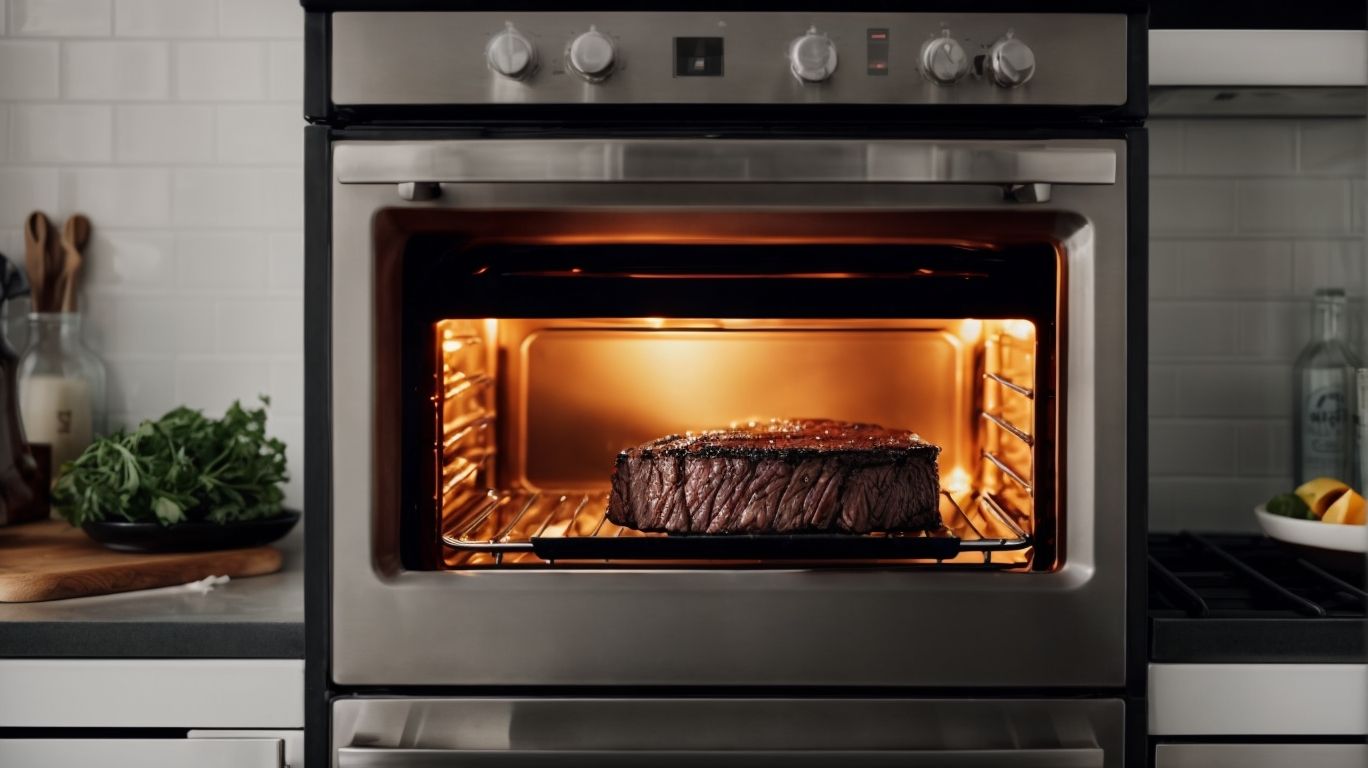
Credits: Poormet.Com – Gary Clark
In case of overcooked steak, consider slicing it thinly and repurposing it in other dishes, while undercooked steak can be returned to the oven for additional cooking with careful monitoring to reach the desired doneness.
When troubleshooting issues of overcooked or undercooked steak, it’s essential to understand the nuances of cooking adjustments. For overcooked steak, utilizing it in stir-fries or salads can salvage the texture and add flavor. If dealing with an undercooked piece, return it to a preheated oven and continue cooking until the internal temperature matches your preference, using a meat thermometer for accuracy.
Overcooked Steak
If the steak is overcooked, salvage the situation by thinly slicing the meat and repurposing it in dishes like salads, sandwiches, or stir-fries to offset the dryness and restore flavor.
When dealing with overcooked steak, one effective strategy is to slice it as thinly as possible. By doing so, you create tender, manageable pieces that can be easily incorporated into various dishes.
For salads, the thinly sliced steak can be arranged on a bed of greens along with other fresh ingredients, adding a hearty protein component to your meal. This not only balances out the dryness but also introduces layers of flavor and texture.
In sandwiches, the thinly sliced steak can be layered with your favorite condiments and vegetables, bringing a new twist to your typical sandwich experience.
Regarding stir-fries, the thinly sliced steak cooks quickly and absorbs the flavors of the other ingredients, revitalizing its taste and making it a versatile addition to the dish.
Undercooked Steak
When faced with undercooked steak, return it to the oven for additional cooking while closely monitoring the process to achieve the desired level of doneness without overcooking.
If you find that your steak is undercooked, don’t worry, there’s a simple solution. Just pop it back into the oven to let it cook for a bit longer. Make sure to keep a close eye on it to prevent it from becoming overcooked. This way, you can make the necessary cooking adjustments to ensure that it reaches the perfect level of doneness. Remember, monitoring the steak’s progress is crucial to getting it just right. Once it’s done to your liking, you can enjoy a delicious, perfectly cooked steak that’s neither underdone nor overdone.
Frequently Asked Questions
How to Cook Steak in Oven After Searing?
1. What is the best type of steak to cook in the oven after searing?
The best type of steak to cook in the oven after searing is a thick cut, such as a ribeye or New York strip. This allows for a juicy and tender steak with a well-seared crust.
2. Can I sear the steak on a stovetop before putting it in the oven?
Yes, searing the steak on a stovetop before transferring it to the oven is the best method for achieving a perfectly cooked steak. This helps to lock in the juices and gives the steak a nice crust.
3. How long should I sear the steak for?
Searing time can vary depending on the thickness of your steak, but a good rule of thumb is to sear each side for 2-3 minutes for medium-rare. Adjust the time for your desired level of doneness.
4. Do I need to use an oven-safe pan for this method?
Yes, it is important to use an oven-safe pan for this method to ensure that the steak cooks evenly and does not overcook or burn on the bottom.
5. Should I let the steak rest after searing before putting it in the oven?
Yes, it is recommended to let the steak rest for 5-10 minutes after searing to allow the juices to redistribute and for a more evenly cooked steak.
6. Can I season the steak before searing?
Yes, you can season the steak with your desired seasonings before searing. This will help to enhance the flavor of the steak. Just be sure to pat the steak dry before searing to ensure a good sear.

